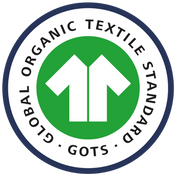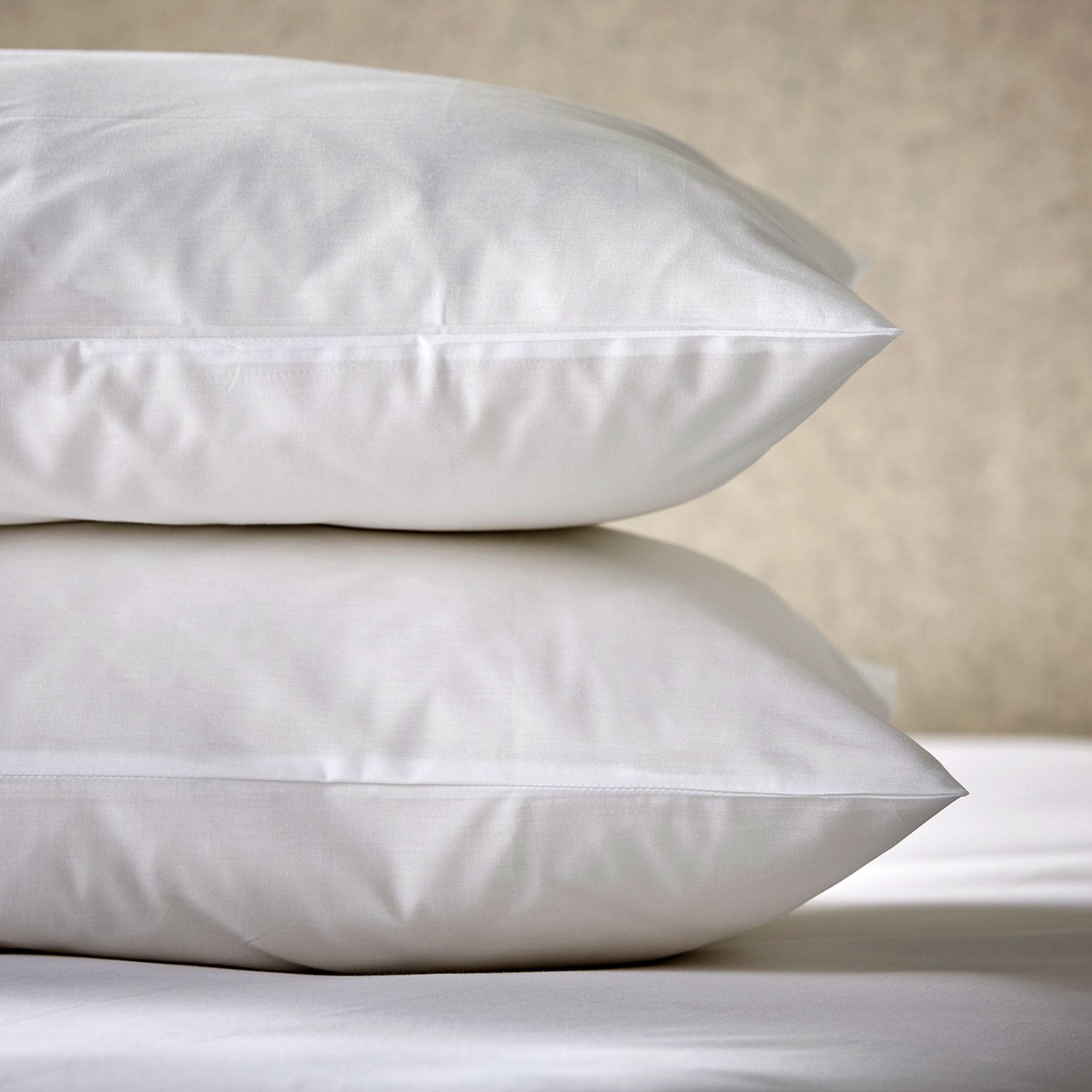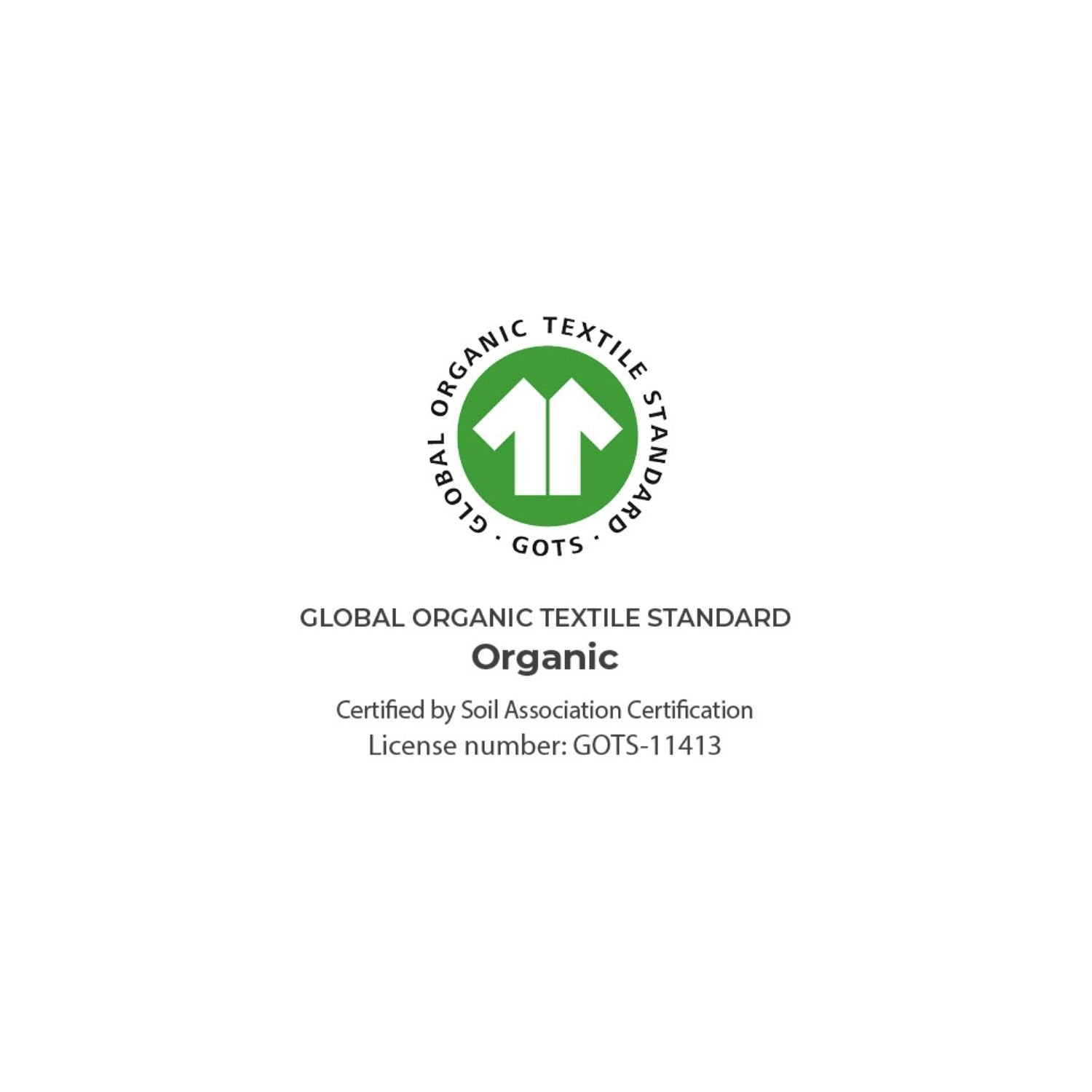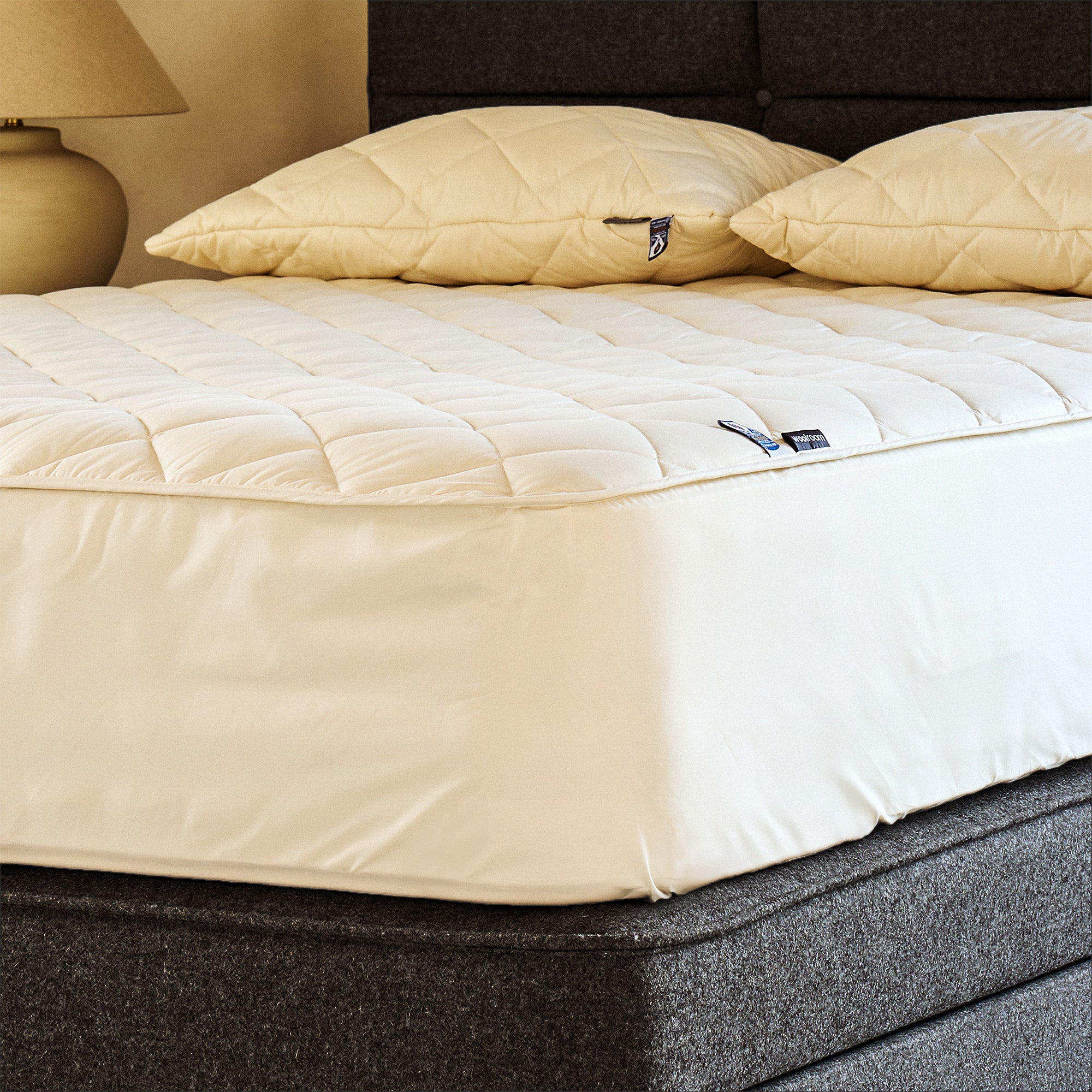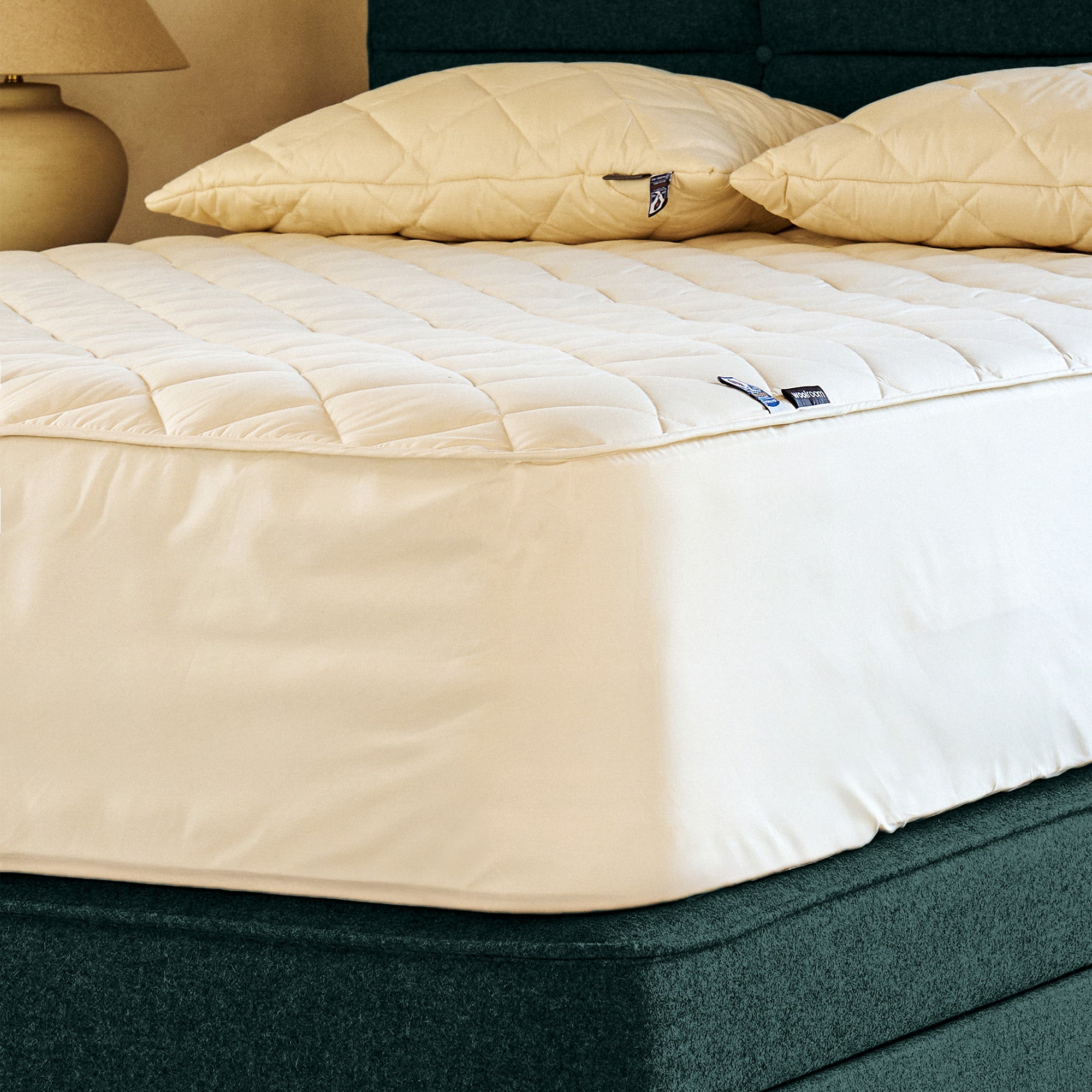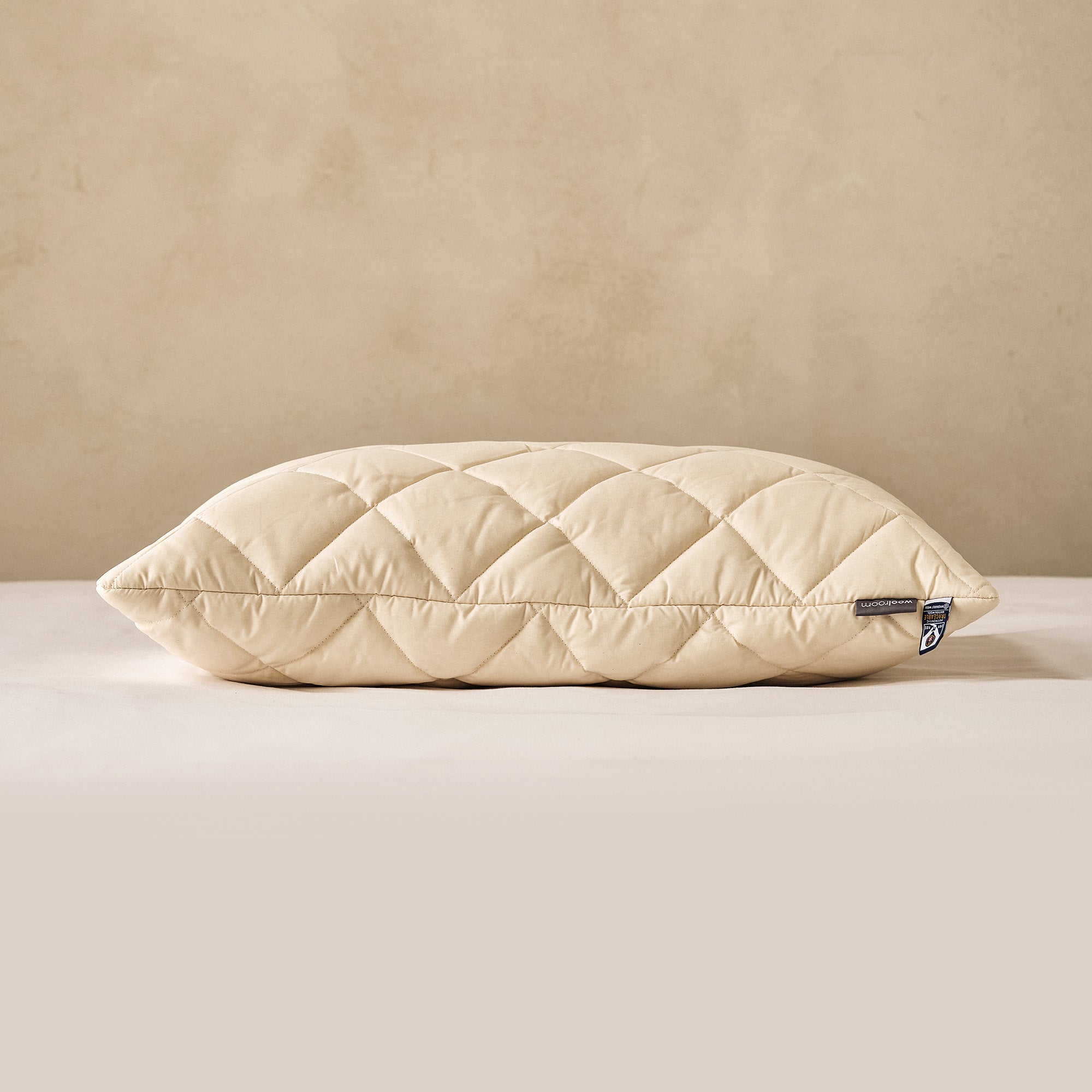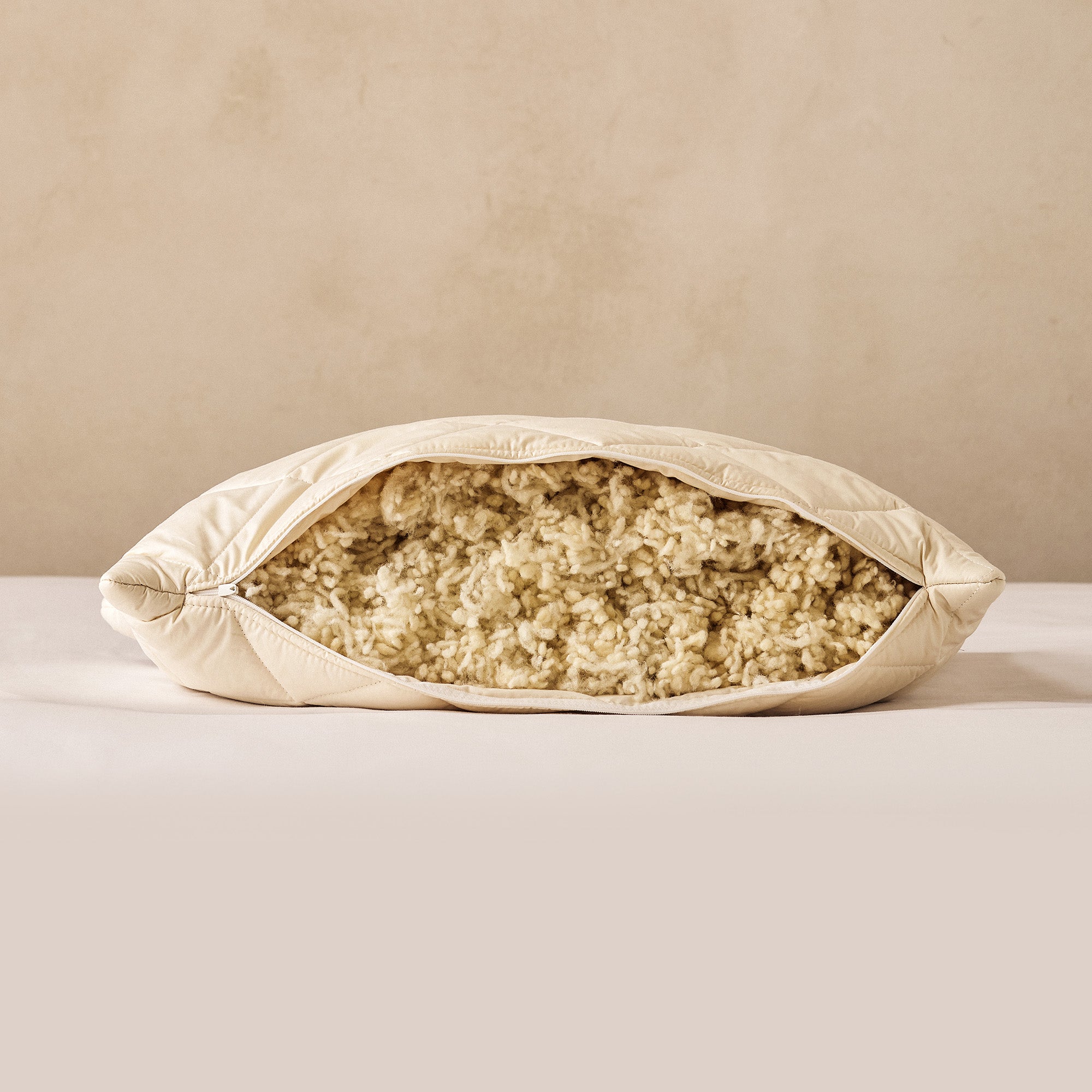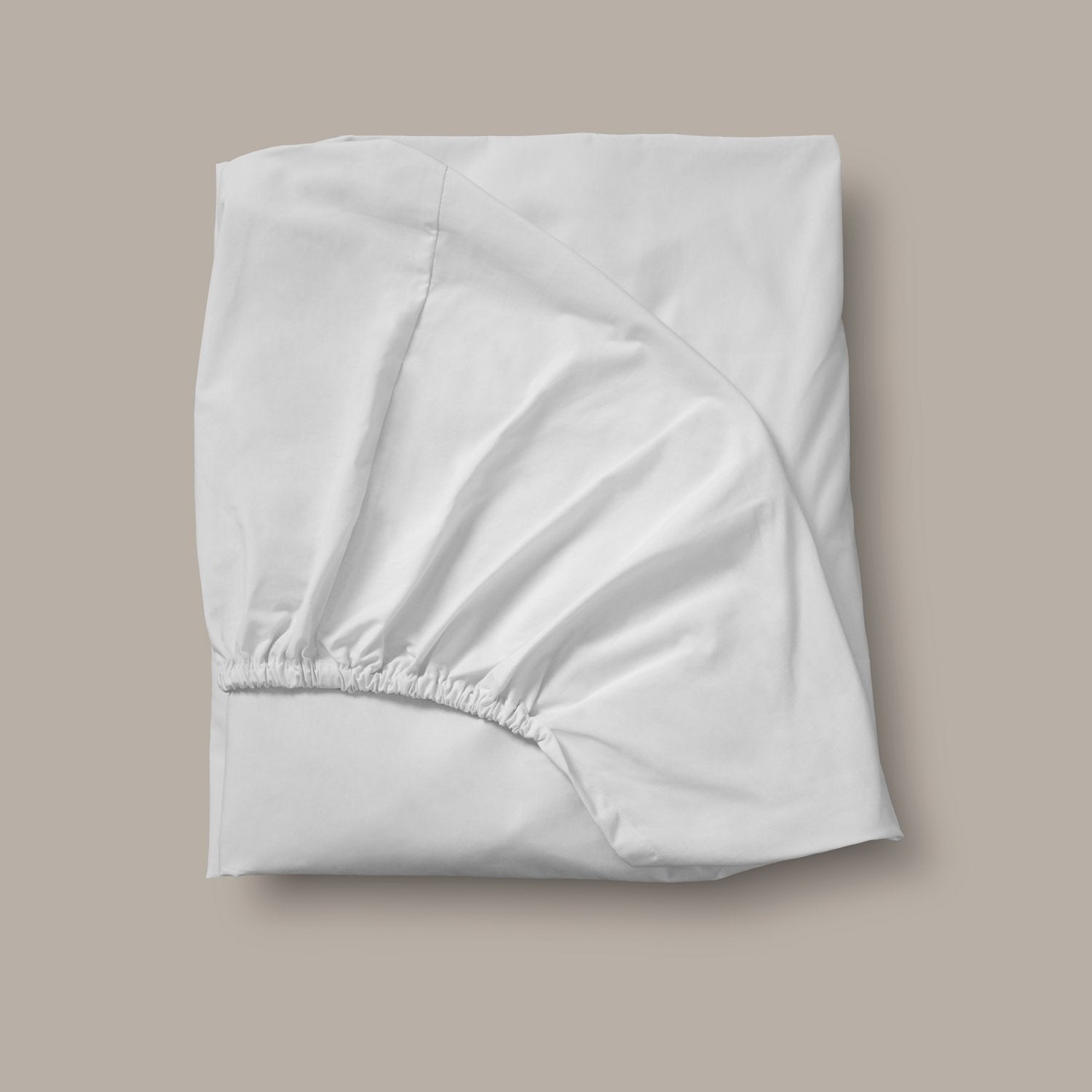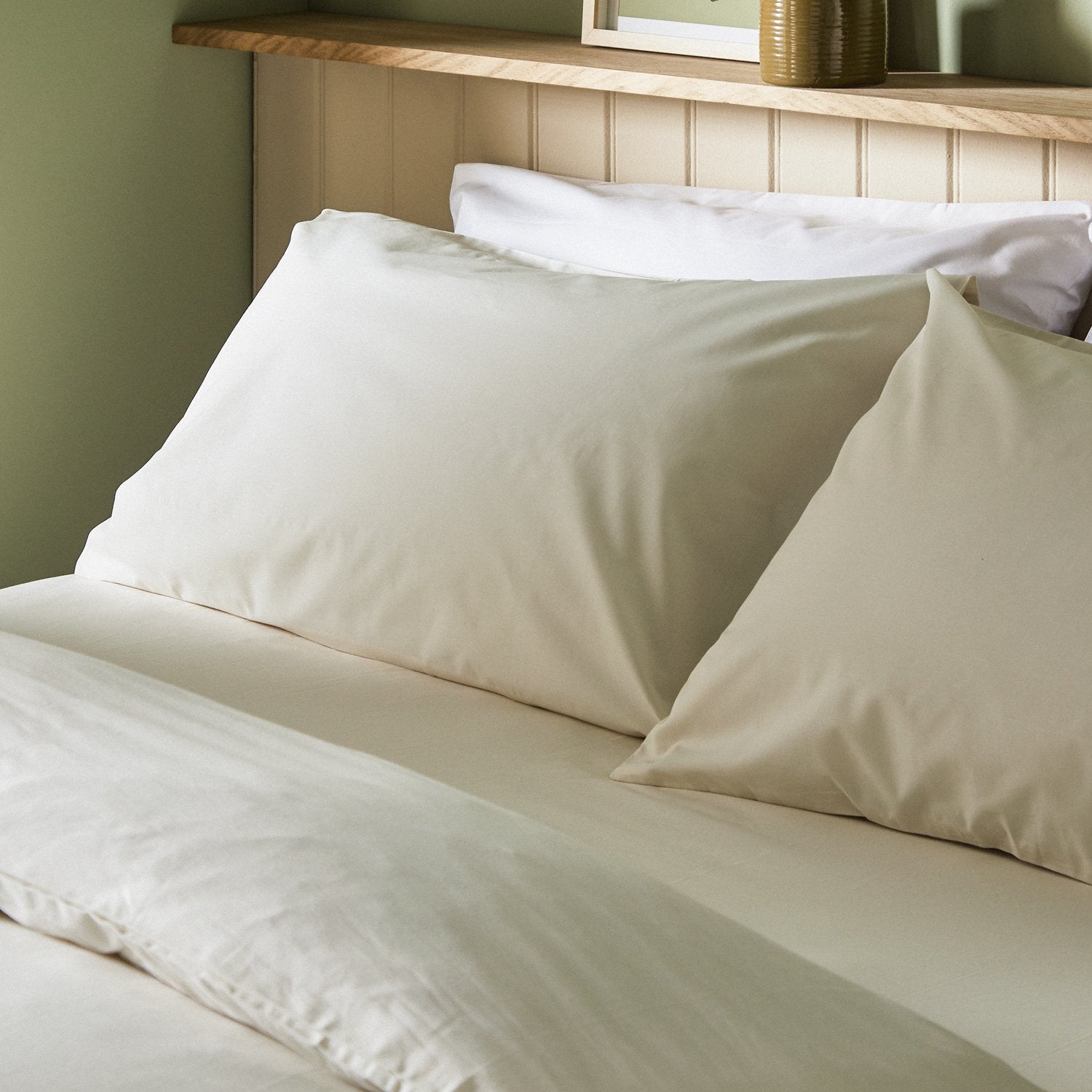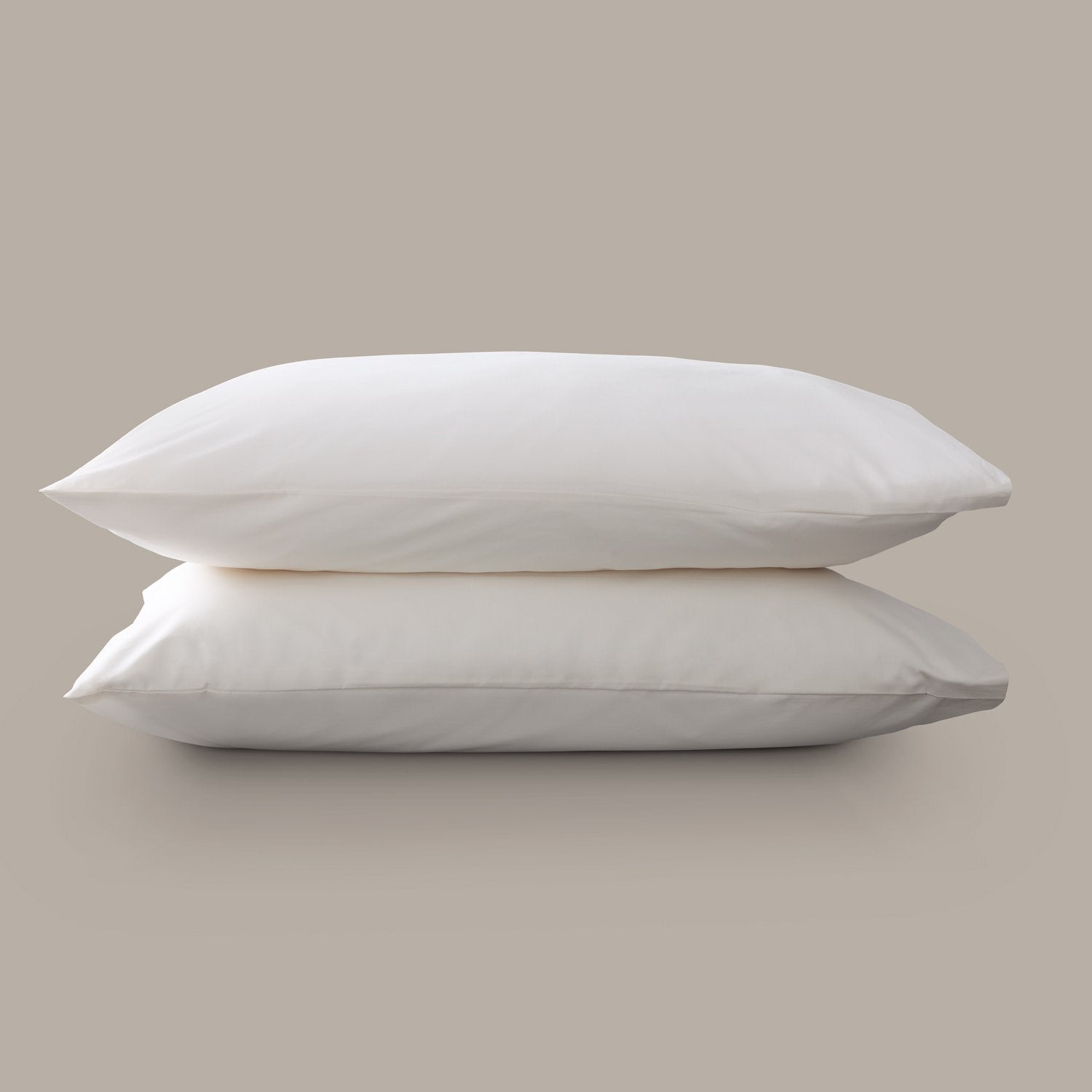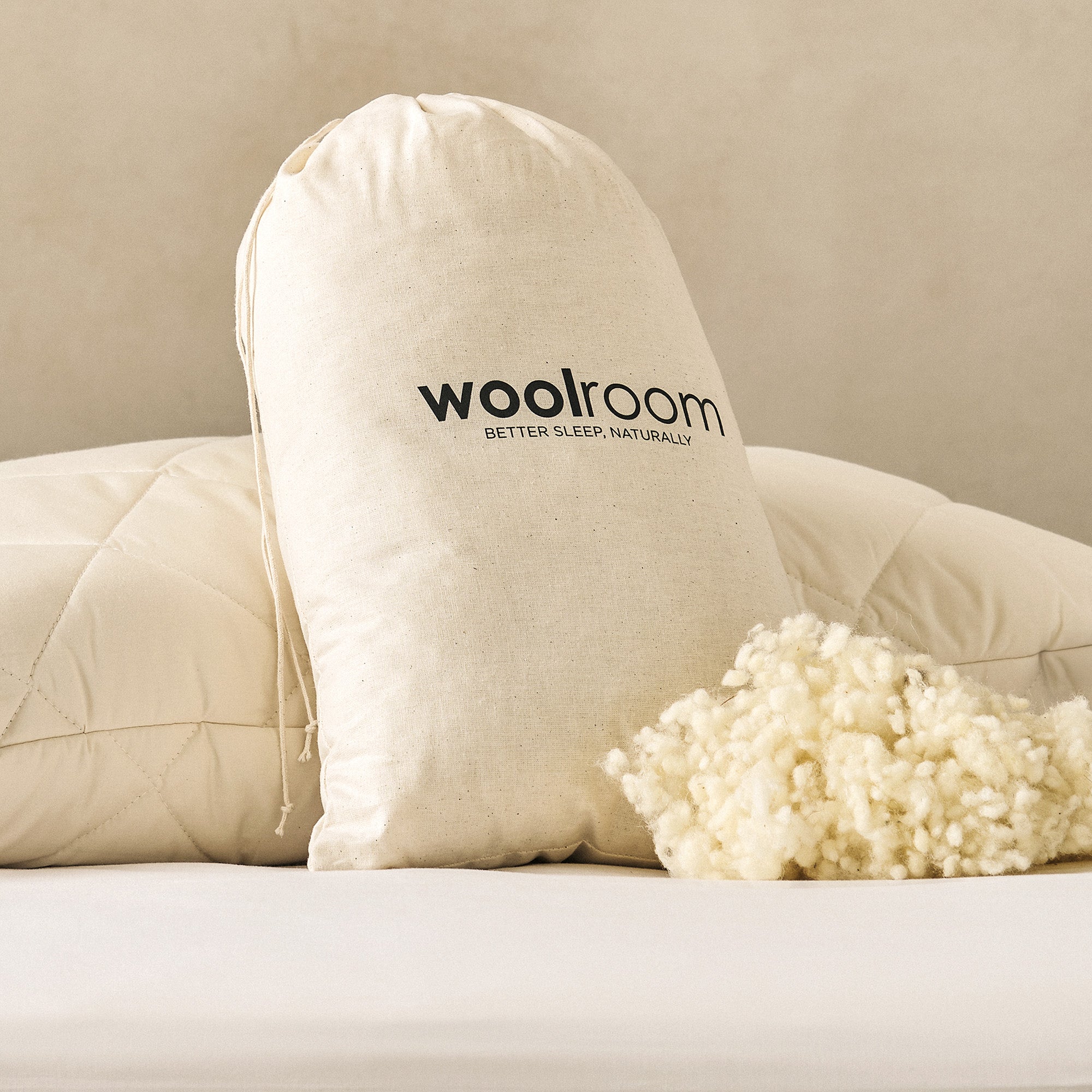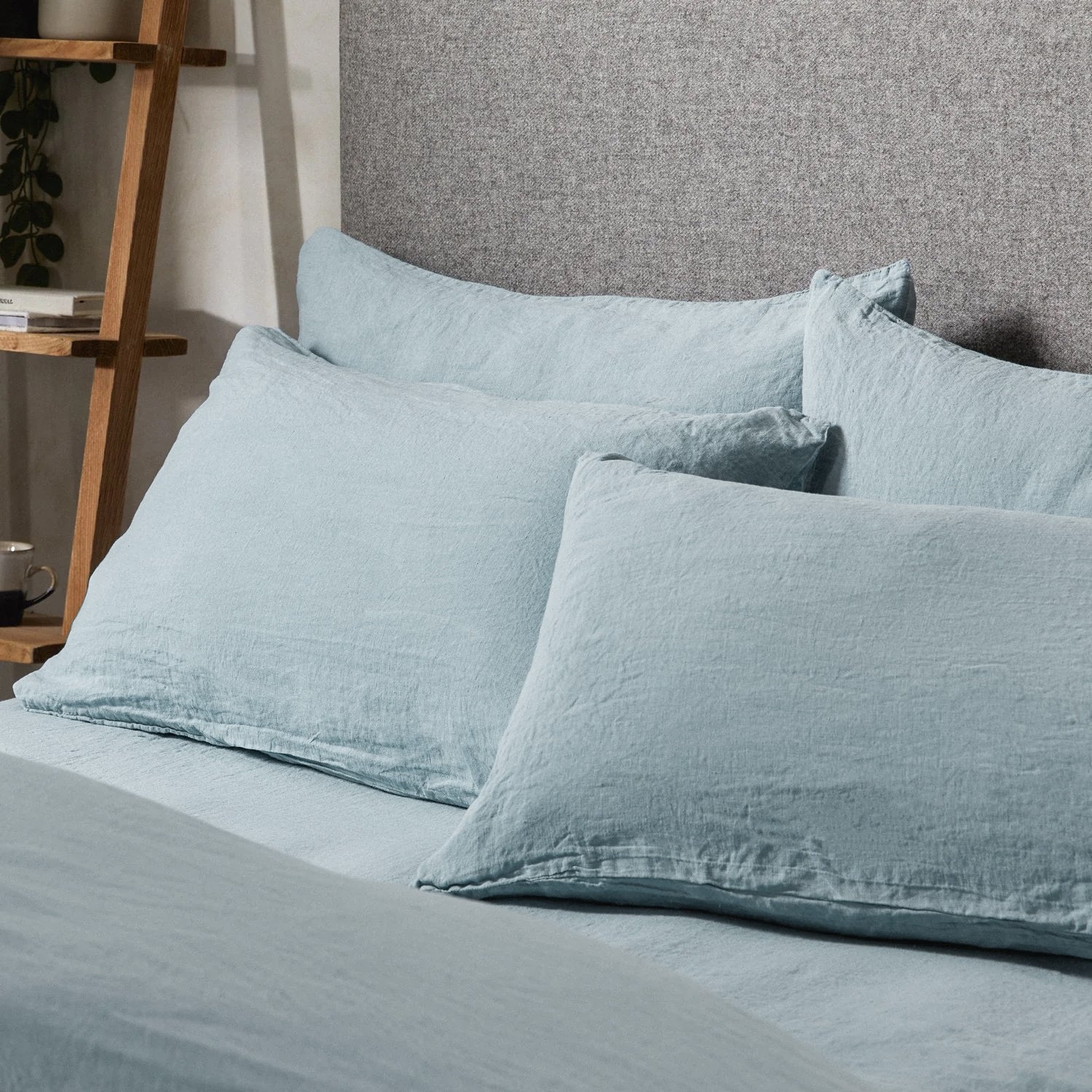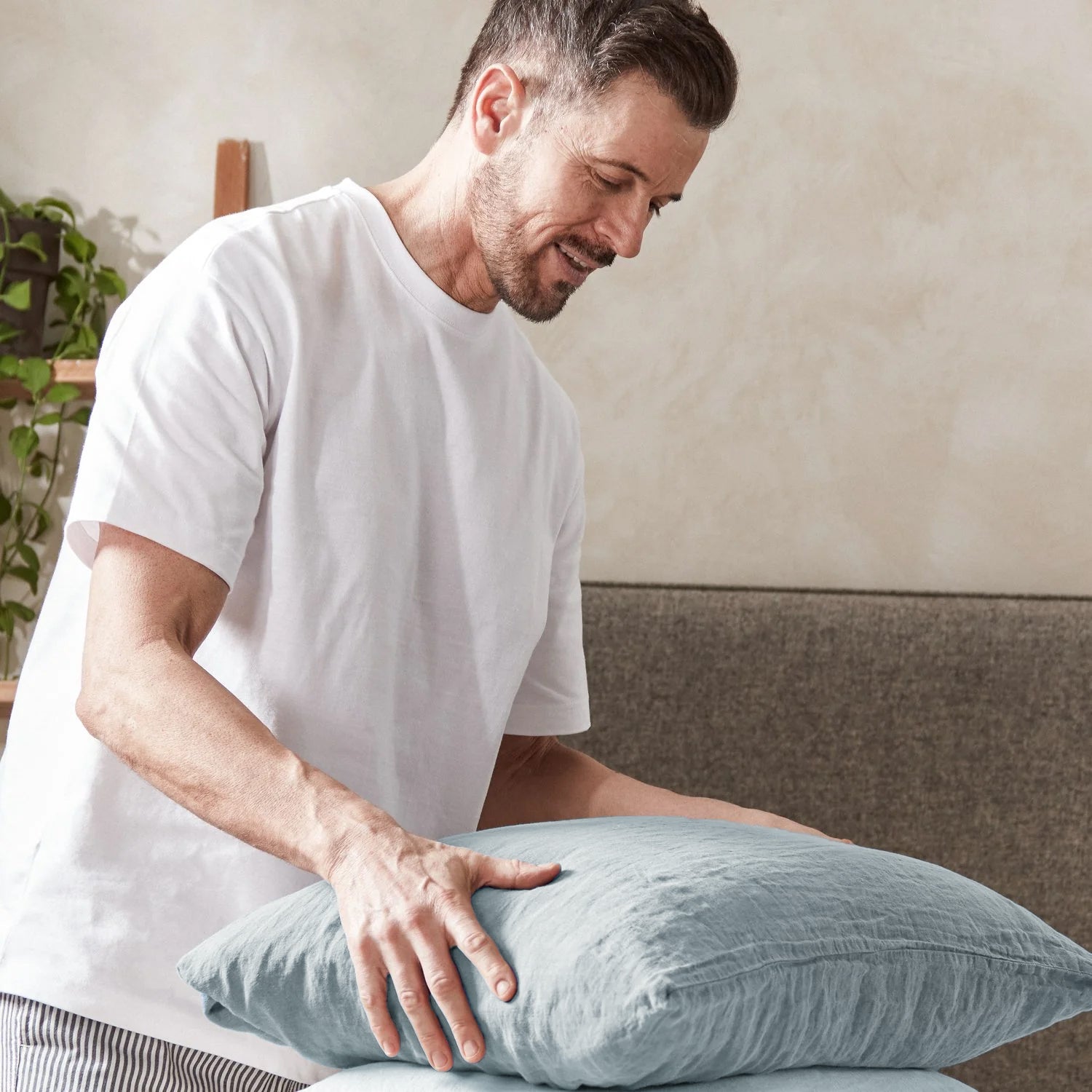Key Takeaways
-
“Eco-friendly” isn’t a regulated term, so be on the lookout for greenwashing and check for materials, certifications and sourcing when you’re hunting for a mattress.
-
Prioritize natural materials, like traceable wool, organic cotton and natural latex, for their low impact and impressive sustainability credentials.
-
Verify sustainability claims with certifications from reputable third-party organizations, like GOTS, GOLS and OEKO-TEX.
Choosing a sustainable mattress can be a little harder than it seems. There are a lot of things to consider, from materials to certifications to manufacturing processes, and that's before you think about personal wants and needs, like firmness and feel. Marketing claims can muddy the waters even more, making it hard to separate the brands that are truly committed to sustainability from those that simply make the claim. As with most things, a little education goes a long way. In this guide to choosing a sustainable mattress, we’re walking you through all the details so you can separate fact from fiction and zero in on a mattress that’s good for you and the planet.
What is an Eco-Friendly Mattress?
Part of the challenge in the hunt for an eco-friendly mattress is that the term itself isn’t regulated. Actually, it’s mostly a marketing term that means different things to different brands. Maybe it means organic materials. Maybe it’s a reference to sustainable sourcing or reduced emissions. Maybe it’s a blatant attempt to mislead consumers.
Really, anyone can claim to sell eco-friendly mattresses, and it’s important to dig a little deeper to understand what that really means. Otherwise, you run the risk of falling victim to what’s known as “greenwashing.” It’s when brands intentionally mislead their customers by exaggerating claims to make their products appear more sustainable or eco-friendly than they actually are. To avoid greenwashing, make a point of checking materials, looking for certifications that really mean something and understanding how a particular product is sourced and produced.
4 Qualities of a Truly Eco-Friendly, Natural Mattress
Generally, mattresses that are marketed as eco-friendly are made with sustainable, non-toxic materials and manufactured in an environmentally responsible process. Overall, the idea is to minimize harm to people and the environment throughout a mattress’s entire lifespan—from production to service life to disposal.
1. Organic or Ethically-Sourced Natural Materials (like traceable wool, organic cotton and natural latex)
Unlike synthetic foams used in many beds-in-a-box, these materials are renewable, biodegradable, compostable and often certified by reputable organizations like the Global Organic Textile Standard (GOTS) and the Global Organic Latex Standard (GOLS).
2. No Volatile Organic Compounds (VOCs)
These compounds are responsible for the off-gassing in synthetic foam mattresses. Eco-friendly mattresses have no or very limited VOCs because they usually avoid synthetic foams and additives like formaldehyde, chemical adhesives and chemical flame retardants. Again, the key is to look for certifications that speak to chemical and emission safety, like OEKO-TEX and Greenguard Gold.
3. Sustainable Manufacturing
Eco-friendly mattresses are often manufactured in a way that reduces waste and conserves water. Materials are also sourced ethically and often locally to further reduce carbon footprints. There’s also thought given to how the mattresses are shipped, with an emphasis on minimizing plastic packaging and using recycled packing materials.
4. Durability and Recyclability
High-quality eco-friendly mattresses are usually built to outperform their synthetic counterparts. Plus, because they’re made with natural materials, they’re easier to recycle and more likely to naturally biodegrade than conventional mattresses.
Why The Term "Organic Mattress" Can Be Misleading
Another thing to consider: Eco-friendly, organic and sustainable are terms that tend to be used interchangeably in the mattress industry. They all generally reference the same idea, but there are differences worth understanding. An organic mattress is made with materials that are certified organic by a third-party organization (like GOTS or GOLS) and grown without pesticides, herbicides or other harmful chemicals. Certified organic materials also need to meet specific farming and processing standards to earn the title. While certain materials within a mattress may be GOTS or GOLS certified, it is incredibly rare for a every zipper, coil, and finishing bit to be certified organic. Beware of brands that tell you otherwise!
Sustainable mattresses focus on reducing environmental impact at every stage, from material sourcing to manufacturing to transportation to disposal. And in this sense, the commitment to sustainability from a mattress maker or brand (like Woolroom) is almost more important. They may try to use organic materials when it makes sense to the overall sustainability and ethical sourcing of the product. Some brands will even go so far as to focus on mattress layers that are renewable, carbon-neutral, or responsibly-sourced (through Fair Trade or other indicators). The emphasis is usually on low emissions, energy-efficiency and fair labor practices.
Organic mattresses aren’t always sustainable, and sustainable mattresses aren’t always organic. If both features matter to you, make sure to look for a brand that’s transparent about its materials and manufacturing processes.
Key Materials in a Sustainable Mattress
Mattresses that really deserve to be labeled as sustainable use naturally derived materials—for good reason. First, materials like traceable wool, organic cotton and natural latex are renewable, biodegradable and responsibly sourced. That means they break down more easily at the end of their service life, reducing their long-term environmental footprint. These materials also need less energy and fewer chemicals to produce compared to polyurethane foams. But the benefits don’t end there.
Wool
Wool is truly a wonder fiber, and its innate characteristics make it ideal for mattresses and bedding products. It’s one of a handful of natural fibers that are truly renewable because sheep grow a fluffy fleece year after year. They’re sheared in the spring, which helps them regulate their body temperature for comfort when the weather warms, and they’ll spend the next few months growing a new fleece that protects them come winter. The cycle is continuous and supported entirely by Mother Nature and the farmers who care for these animals.
Here at Woolroom, we partner with British farms that are committed to ethical animal husbandry practices. We know that the best wool comes from the happiest, healthiest animals, and we’re proud to support farmers who are committed to the five freedoms outlined in the UK Animal Welfare Act of 2006. And in the interest of full transparency, our Wool ID program means the wool in our mattresses and bedding products is traceable all the way back to the very animals and farms from which it came.
Wool is naturally resilient and impressively durable, which contributes to a longer mattress lifespan. And when it is finally time to retire a wool mattress, the material can be recycled again and again without affecting its tensile strength. According to Woolmark, wool is actually the world’s most recycled fiber. It’s also biodegradable and decomposes naturally over the span of a few months.
Another bonus? Wool is a natural fire retardant, which nixes the need for chemical retardants in a mattress. Plus, it’s wonderfully temperature regulating, moisture wicking and antimicrobial naturally, further reducing the need for chemical additives.
Organic Cotton
The key word here is “organic,” because conventional cotton production isn’t the same as organic cotton production. Sure, cotton is natural, but it has high water needs and it’s often treated with pesticides and fertilizers. In fact, conventional cotton production is so chemically intensive, multiple regulating bodies consider it the world’s dirtiest crop. That raises concerns about chemical residue in the finished product (problematic for those with allergies or sensitivities). If you’re looking for a mattress that really qualifies as eco-friendly or sustainable, make sure it uses organic cotton instead of conventional cotton, which doesn’t have the same energy consuming or farming practices, and look for the GOTS certification to be certain. Bonus points: GOTS also verifies responsible processing and fair labor practices.
Natural Latex
Like the organic/conventional cotton thing, be mindful of considering mattresses that are made with natural latex, not a synthetic version. Natural latex comes from rubber trees, which are a renewable resource that can produce latex for decades. The material is biodegradable and lacks the petroleum-based chemicals of synthetic foams, but it has many of the properties that make poly and memory foam so appealing, like outstanding pressure relief and even weight distribution. Natural latex is incredibly durable and breathable, with a gentle buoyancy that some people really like.
Certifications to Look For in an Eco-Friendly Bedding
To eliminate any doubt about whether or not your bedding and mattress actually qualifies as eco-friendly, check for certifications. That’s the best way of ensuring that a mattress lives up to any marketing claims. Keep an eye out for:
-
GOTS. The Global Organic Textile Standard covers organic cotton, wool and other fibers. It ensures that at least 70% of the material used is certified organic, and it bans certain dyes and finishes. And, as we’ve already mentioned, it enforces fair labor practices. At Woolroom, while our mattresses are not GOTS certified wool, our bedding is and so are our linens and sheet sets.
-
GOLS. This is the latex version of GOTS and it only covers organic natural latex. This certification ensures that latex comes from certified organic rubber trees and it places strict limits on chemical additives.
-
OEKO-TEX Standard 100. This standard sets the benchmark for textile safety. Products that have earned this designation have passed safety tests for the presence of harmful substances.
-
Greenguard Gold. This certification ensures low chemical-off gassing for complete products, not just materials.
Here at Woolroom, we’re proud that our farms, production facilities, organic washable bedding and bed linens are GOTS certified. All of our bedding is certified by OEKO-TEX and our products have earned the Shepherd’s Crook mark through Authentic Traceable Washable British Wool and Authentic Traceable Washable Organic British Wool. Our wool mattresses have been tested at the Bio Composites center at Bangor University and confirmed to be free of harmful VOCs, and all of our products hold the Allergy UK Seal of Approval. Last, but certainly not least, Woolroom is Woolmark certified.
Manufacturing and Sustainability Practices
It’s not just the materials that contribute to a mattress’s eco-friendly credentials. How it’s made matters just as much. Mattresses that are ethically sourced and made with low-impact manufacturing processes qualify as sustainable, and companies that are committed to these practices tend to embrace transparency.
Beyond our commitment to ethical wool, as evidenced by our Wool ID program, Woolroom has long embraced eco-minded manufacturing. Conventional wool processing is hard on the environment and often leaves chemical residue in the finished product. At Woolroom, we process sheared wool at our own facility, where it’s checked, sorted, graded, and classified before being sent off to our artisans in the workshop. We’ve proudly cultivated relationships with craftspeople across the world, from Europe to North America, and we work closely with family-run factories that embrace fair labor practices. All told, it’s a process that relies on 150 years of experience, leading to finished wool bedding products that are made responsibly for the sake of the people making them and sleeping on them.
Woolroom is the Best Option for a Sustainable Mattress
Choosing a sustainable mattress takes some digging—but it’s worth the effort. From understanding greenwashing to decoding certifications and materials, being an informed shopper helps you find a mattress that truly supports your health and the planet. The good news? You don’t have to compromise comfort for sustainability.
At Woolroom, we’ve done the hard work for you. Our wool mattresses are crafted with natural materials that are ethically sourced and fully traceable through our Wool ID program. They’re made in partnership with skilled artisans who prioritize quality, fairness and low-impact processes—and they’re tested for everything from VOCs to allergen safety. Plus, the sleep benefits speak for themselves: Research from the University of Leeds shows that wool can lead to 25% more deep sleep and a 67% better chance at a good night’s rest. Long story short? Woolroom has mattresses that are as good for you as they are for the planet.
Frequently Asked Questions
What makes a mattress sustainable?
Sustainability in a mattress is largely about the commitment to reducing environmental impact at every stage, from material sourcing to manufacturing to transportation to disposal. Sustainable mattresses often use organic or responsibly sourced materials, with energy efficient production processes, low emissions and fair labor practices.
Why are people no longer buying memory foam mattresses?
The shift from memory foam mattresses is primarily due to concerns about chemicals and off-gassing and a growing desire for natural, non-toxic materials. Memory foam is also notorious for heat retention and plagued by durability and sagging issues. For those concerned about environmental impact, there are simply better options out there.
What is the most environmentally friendly mattress?
It’s subjective, but the most environmentally friendly mattress is the one that uses sustainable, non-toxic materials, ethical sourcing and low-impact manufacturing. Woolroom’s collection of wool mattresses are designed for durability and sustainability, with ethical sourcing and traceable wool. Plus, wool is perfectly suited to better sleep, thanks to its ability to regulate temperature and wick moisture.
For more Buying Guides, Blogs and Resources when it comes to getting a better night's sleep, visit the Woolroom Learning Center.


